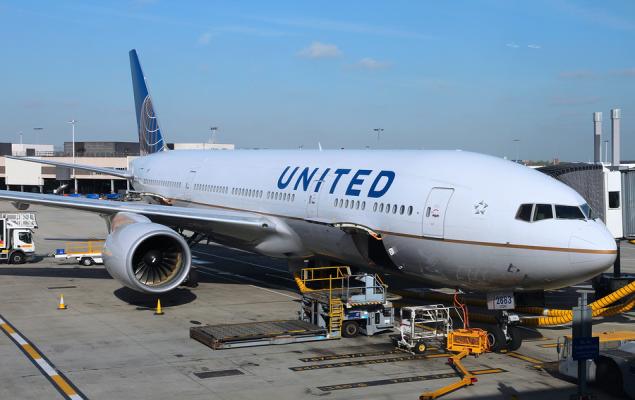United Airlines (UAL) Q4 Loss Wider Than Expected, Shares Dip

Image: Bigstock
United Airlines (UAL - Free Report) incurred a loss (excluding 6 cents from non-recurring items) of $7 per share in the fourth quarter of 2020, wider than the Zacks Consensus Estimate of a loss of $6.56. Results were hurt by coronavirus-induced weakness in air-travel demand.
Despite the optimism surrounding coronavirus vaccine distributions, the airline provided a bleak outlook for the first quarter of 2021. This, in turn, weighed on investor sentiments, causing shares of the company to dip 2.8% in after-market trading on Jan 20.
The carrier estimates total operating revenues to decline 65-70% year over year in the current quarter. The carrier stated that the outlook does not include the potential impact from accelerated COVID-19 vaccine distribution, which may lead to faster recovery in air-travel demand.
Coming back to the earnings performance, operating revenues of $3,412 million lagged the Zacks Consensus Estimate of $3,420.4 million. The top line plunged 68.7% year over year due to 75.7% drop in passenger revenues, which totaled $2,410 million in the reported quarter. However, cargo revenues surged 77.2% year over year to $560 million. Meanwhile, revenues from other sources declined 30.8% to $442 million.
United Airlines Holdings Inc Price, Consensus, and EPS Surprise
(Click on image to enlarge)

United Airlines Holdings Inc price-consensus-eps-surprise-chart | United Airlines Holdings Inc Quote
Operating Results
Consolidated passenger revenue per available seat mile (PRASM: a key measure of unit revenues) decreased 43.8% year over year to 7.85 cents. Total revenue per available seat mile fell 27.5% to 11.12 cents. On a consolidated basis, average yield per revenue passenger mile dipped 16.6% from the year-ago quarter.
During the quarter under review, consolidated airline traffic, measured in revenue passenger miles, tumbled 70.9% year over year. Capacity (measured in available seat miles) contracted 56.8%. Consolidated load factor (percentage of seat occupancy) deteriorated 26.9 percentage points year over year to 55.6% as traffic decline was more than capacity contraction. Meanwhile, average fuel price per gallon fell 35.7% year over year to $1.35. With most of the fleet remaining grounded/under-utilized, fuel gallons consumed were down 53% to 503 million.
Owing to its cost-reduction initiatives, the Chicago-based carrier was able to bring down operating costs (excluding special charges) by 42.4% on a year-over-year basis. Consolidated unit cost or cost per available seat mile (CASM) excluding fuel, third-party business expenses, profit-sharing, and special charges, escalated by 54.6% mainly due tocapacity cuts.
United Airlines exited the fourth quarter with cash and cash equivalents of $11.27 billion compared with $2.76 billion at the 2019 end. Long-term debt at the end of the reported quarter was $24.84 billion compared with $13.14 billion at the 2019 end.
Other Details
During the December quarter, cash burn averaged $33 million a day including $10 million of average debt principal payments and severance payments per day. This compares unfavorably with the daily cash burn of $25 million, including $4 million of principal payments and severance expenses, recorded in third-quarter 2020. This Zacks Rank #3 (Hold) company exited the quarter with total available liquidity of $19.7 billion.
Q1 2021 Outlook
United Airlines anticipates capacity to fall at least 51% from the year-ago period. Available liquidity at the end of the period is expected to be similar to that at the end of 2020.
Disclaimer: Neither Zacks Investment Research, Inc. nor its Information Providers can guarantee the accuracy, completeness, timeliness, or correct sequencing of any of the Information on the Web ...
more



Too late to help me :(